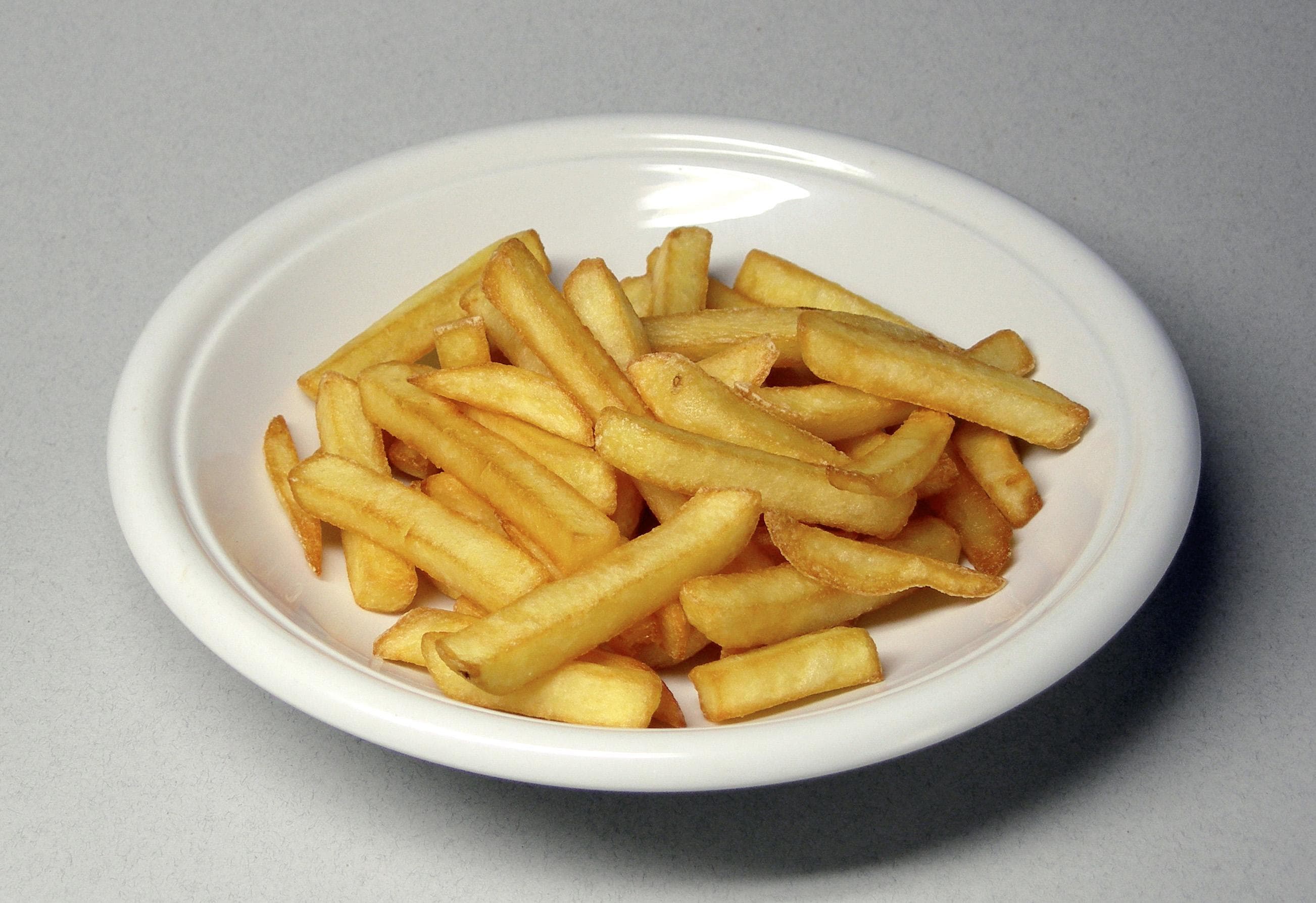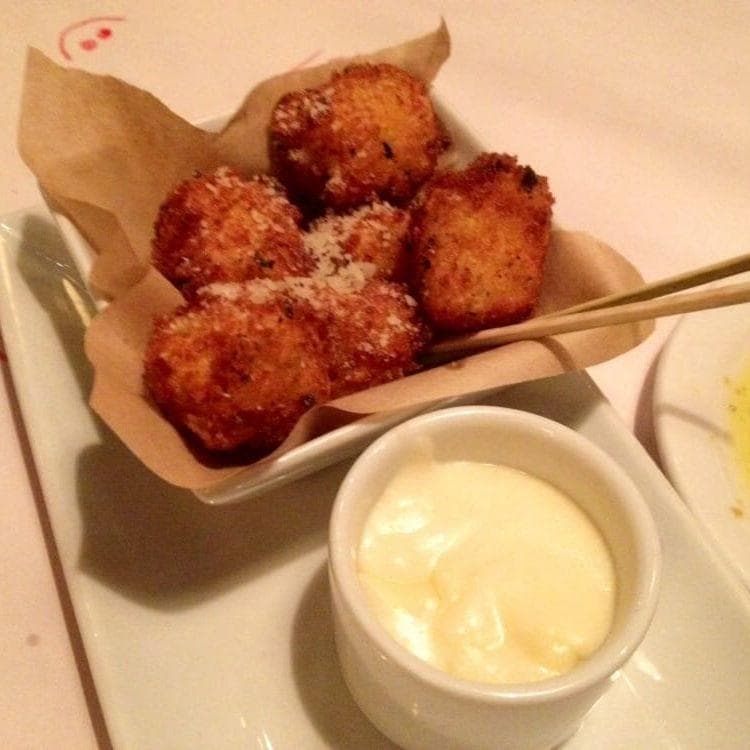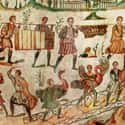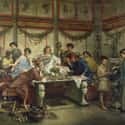-
(#6) Asparagus Pie
Highly regarded in the Roman world, asparagus was described by Pliny the Elder as "extremely wholesome as an ailment to the stomach... it sharpens the eyesight... is good for pains in the chest and spine, and diseases of the intestines... acts as an aphrodisiac, and is an extremely useful diuretic."
While often served cold, Apicius recommended first peeling, washing, and boiling the vegetable to cook it. To make asparagus pie, one had to crush and strain the asparagus before adding pepper, coriander, and onions to a mixture of wine, broth, and oil. After thickening it with eggs, meat from a figpecker - a small bird that enjoyed figs, hence its name - could be added in.
Asparagus pie was then baked and served with sprinkling of pepper.
-
(#3) Ostrich Ragout
Much like flamingo, ostrich was another exotic meat enjoyed by Romans, albeit only on unique occasions. Galen, a second-century Greek physician and scholar, described ostrich meat as "excrementitious and much more difficult to digest than the meat of [other birds]... although their wings are no worse than others."
This didn't stop people from eating it, however. Emperor Elagabalus (r. 218-222) was said to have "served ostriches" at banquets, insisting "the Jews had been commanded to eat them" as a joke mocking Jews within the Roman world.
Apicius has two recipes for ostrich, both dishes that included vegetables, herbs, and chunks of meat in stew-like fashion. One boiled ostrich ragout was seasoned with "pepper, mint, cumin, leeks... dates, honey, vinegar, raisin wine, and broth." Oil was added, as well, and the stock was brought to a boil to cook the ostrich meat. Once the meat was drained, the mixture was thickened before putting the meat back in and serving to taste.
The second ostrich stew featured flavors like "pepper, thyme, honey, mustard," and vinegar.
Ostrich eggs were desirable, as well, with one egg feeding as many as eight people.
-

(#5) Hazelnut Custard
Nut custard was a sweet dish enjoyed by Romans as a porridge or a pudding, depending on the amount and type of milk, egg, and flavoring one added to the mix.
Nut custards could also be eaten as turnovers or tarts. One of Apicius's recipes calls for crushing "very fine walnuts and hazelnuts" before toasting them, adding honey, and blending them with "pepper, broth, milk, and eggs, and a little oil."
Another of the sweet nut treats described by Apicius included pine nuts, or pignolia, again chopped and roasted with honey and mixed with pepper, broth, milk, eggs, and still more honey. Raisins could be thrown in, too, for a touch of extra sweetness.
Heat thickened the nut-based mixture, which was then put into molds and "baked in [a] hot water bath." They were cooled and served, probably with more honey drizzled on top.
-
(#2) Soft-Boiled Eggs In Pine Nut Sauce
Romans very much enjoyed eggs, and they were often featured as appetizers. Eggs could be fried and served with wine sauce or boiled and seasoned with "broth, oil, pure wine, or... broth, pepper, and laser (a popular herb)."
Another common egg dish was a soft-boiled or poached egg with a sauce made out of pepper, soaked pine nuts, honey, vinegar, and garum (fish paste).
Preparing the pine nuts for the dish would have required soaking them overnight, draining them, and using a mortar to pound them. Once they were mixed with pepper, honey, and fish paste, the sauce was heated while the eggs were boiled. When served, the sauce was poured over whole peeled eggs in a bowl.
-

(#12) Sea Scorpion With Turnips
Identified by Pliny the Elder as a vegetable that could withstand extreme cold, turnips could be green, sweet, tall, short, or round, and were served on their own or with fish, crane, or duck.
Turnips were boiled and covered in oil and vinegar as a salad, or crushed and mixed with herbs to make a warm soup. When combined with sea scorpion, they were boiled, chopped, and squeezed over the sea scorpion, and left to simmer with cumin, laurel berries, and saffron.
According to the recipes handed down by Apicius, Romans also used other root vegetables like carrots, radishes, and parsnips. Carrots and parsnips were fried, boiled, pureed, or stewed, but were rarely, if ever, combined with meats. The sea scorpion recipe is somewhat unique in its inclusion of a root vegetable and protein.
-

(#8) Sow Udders And Pig Bellies
Sow udders, wombs, and bellies were eaten a variety of ways - all, however, were considered delicacies. Roman foodies would commonly eat them lightly seasoned with pepper, celery seed, mint, honey, and vinegar; pickled, grilled, or fried; or mixed into casserole-type dishes.
A stuffed sow belly was first boiled, then roasted, and seasoned with pepper, wine, brine, or mustard. Apicius describes an elaborate "every-day recipe" as such:
Pieces of cooked sow's udder, pieces of cooked fish, chicken meat, and similar bits, mince uniformly, season well, and carefully. Take a metal dish [for a mold].
Break eggs [in another bowl] and beat them.
In a mortar put pepper, lovage, and origany, which crush. Moisten [this] with broth, wine, raisin wine, and a little oil; empty it into the bowl [with the beaten eggs, mix] and heat it [in the hot water bath]. Thereupon when [this is] thickened mix it with the pieces of meat.
Now prepare [alternatively] layers of stew and pancakes, interspersed with oil [in the metal mold reserved for this purpose] until full, cover with one real good pancake, cut into it to vent hole for chimney on the surface [bake in hot water bath and when done] turn out upside down into another dish. Sprinkle with pepper and serve.
Pig paunches were also eaten as a treat. A hollowed-out pig stomach was filled with pork, "brains - with nerves removed," eggs, nuts, and seasoning, then cooked halfway. After opening the paunch, the mixture was then breaded and cooked again.
New Random Displays Display All By Ranking
About This Tool
The expansion of the Roman Empire exposed the Romans to the eating habits and cooking skills of many other regions. In the beginning, the diets of the various classes of ancient Rome were not very different. As the empire became rich and powerful, the food of the rich gradually became abundant and luxurious. The vast Mediterranean Sea provided abundant aquatic resources for the ancient Roman Empire. Lobster, the most popular food nowadays, was also a common noble food at the peak of the Roman Empire.
Food played an important role in the development of human civilization. By the time of the heyday of the empire, the food culture of ancient Romans had undergone great changes. You could check the collection of 13 delicious foods from the Roman Empire.
Our data comes from Ranker, If you want to participate in the ranking of items displayed on this page, please click here.













